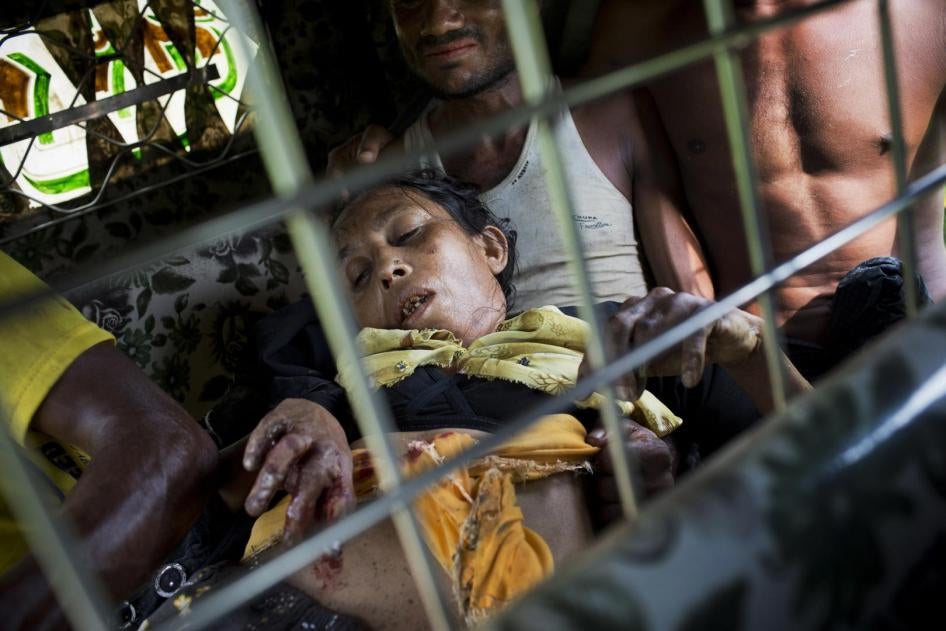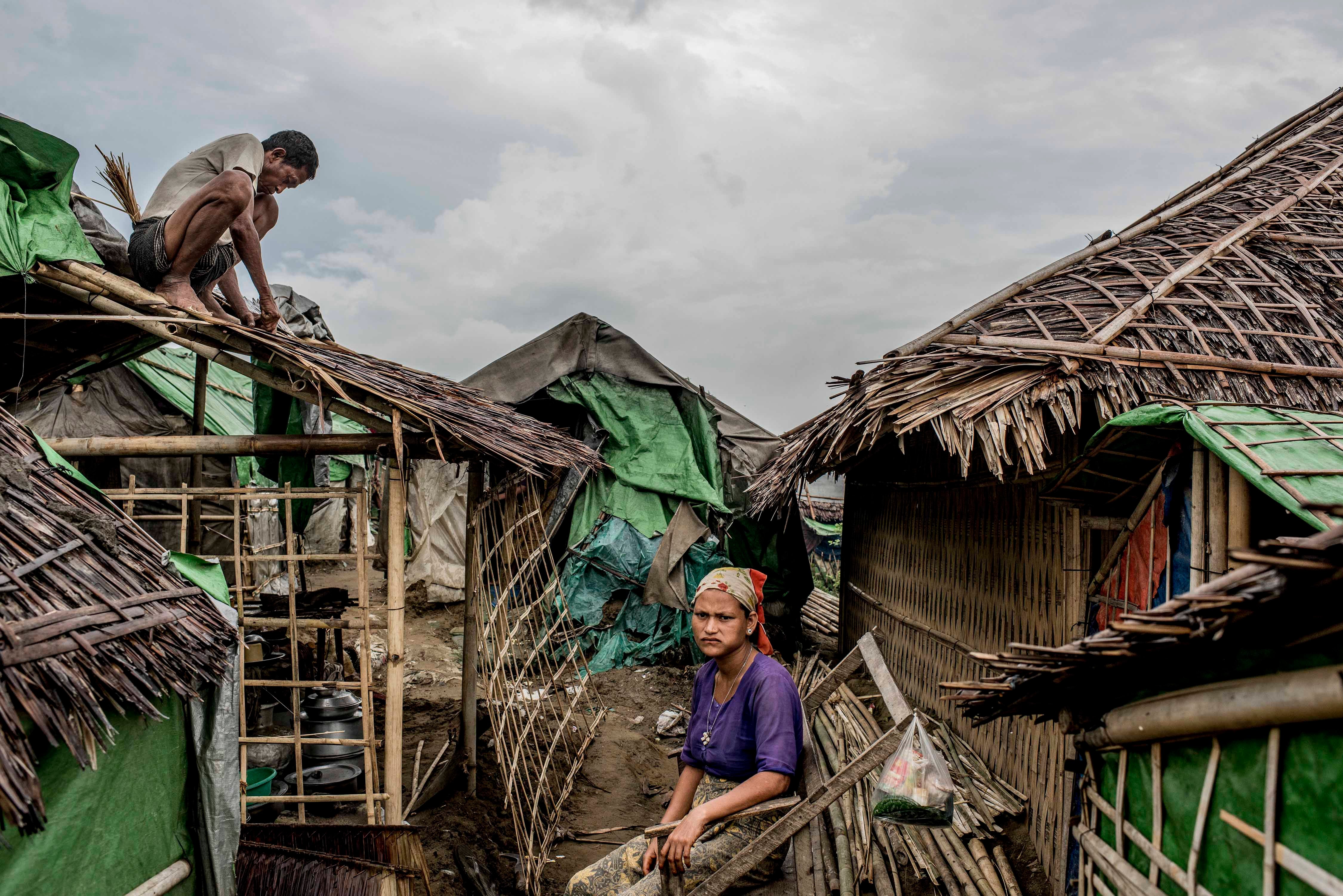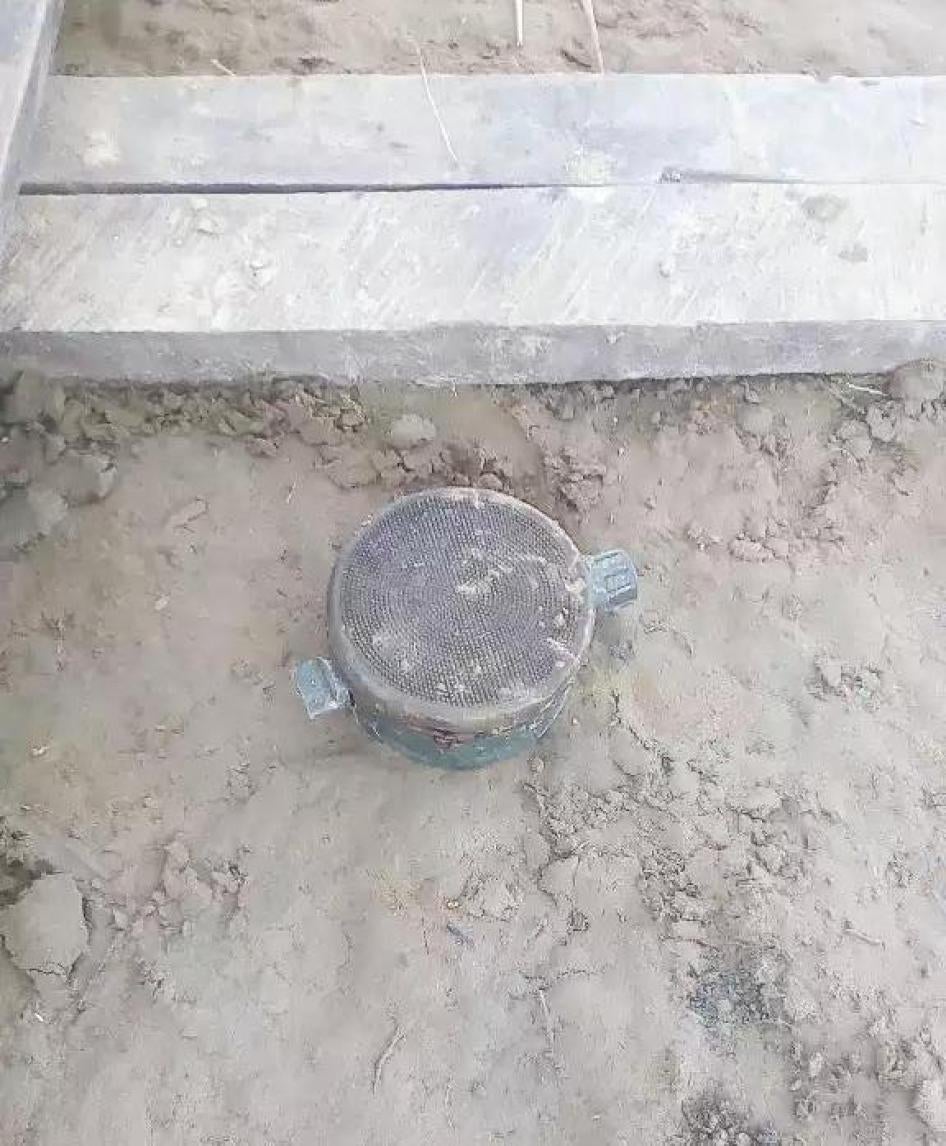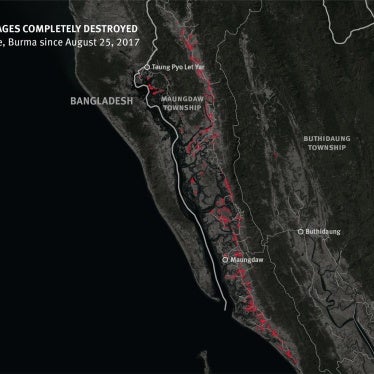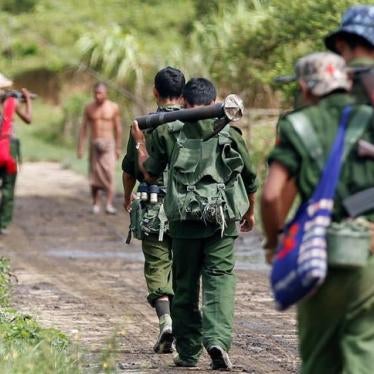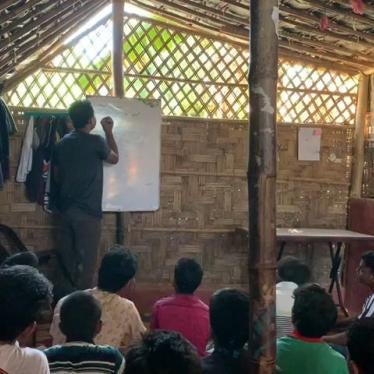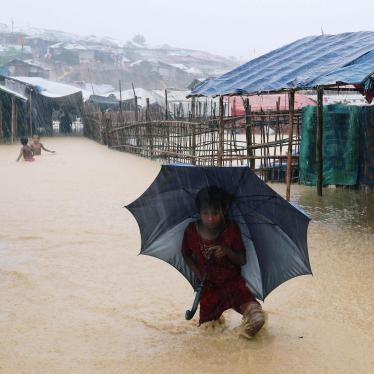(New York) – Burmese security forces have laid landmines during attacks on villages and along the Bangladesh border, posing a grave risk to Rohingya Muslims fleeing atrocities, Human Rights Watch said today. The Burmese government should immediately stop using antipersonnel landmines and join the 1997 Mine Ban Treaty.
“The dangers faced by thousands of Rohingya fleeing atrocities in Burma are deadly enough without adding landmines to the mix,” said Meenakshi Ganguly, South Asia director. “The Burmese military needs to stop using these banned weapons, which kill and maim without distinction.”
According to witness accounts, independent reporting, and photo and video recordings, Burmese soldiers have in recent weeks laid antipersonnel landmines at key crossing points on Burma’s border with Bangladesh. Witnesses told Human Rights Watch that Burmese military personnel also planted mines on roads inside northern Rakhine State prior to their attacks on predominantly Rohingya villages. The Burmese government has accused the Arakan Rohingya Salvation Army (ARSA) of using improvised explosive devices (IEDs) against infrastructure and security forces.
Two Rohingya refugees from inner areas of Rakhine State, one from Buthidaung and another from Rathedaung township, told Human Rights Watch they saw the Burmese military laying antipersonnel mines on roads as the military entered and attacked villagers. “Mohammad,” 39, said he saw a neighbor’s son step on one of the mines laid by the military. The mine blew his right leg off.
On September 4, 2017, a landmine detonated on a path used by many refugees near the hamlets of Taung Pyo Let Yar, about 200 meters from the Bangladesh border. Human Rights Watch witnessed smoke arising from the hamlets, suggesting burning by the military that caused villagers to flee. The next day, three Rohingya men were wounded in three separate landmine explosions near the same border point.
Two Rohingya refugees told Human Rights Watch that men in apparent Burmese military uniforms were seen in the northern part of Taung Pyo Let Yar performing some activity on the ground prior to the September 4 explosions. One described watching a Burmese military patrol on the road near the border on the morning of September 4. From a vantage point in so-called no-man’s land, he observed several soldiers from the patrol stop at least twice, kneel down on the ground, dig into the ground with a knife, and place a dark item into the earth.
Since late August, Burmese security forces, following a coordinated attack by ARSA militants, have carried out a campaign of ethnic cleansing involving mass arson, killing, and other abuses against the Rohingya population, causing the flight of more than 420,000 people to neighboring Bangladesh.
Human Rights Watch has called on members of the United Nations Security Council to hold a public meeting and adopt a resolution that condemns the Burmese military’s ethnic cleansing campaign and threatens to impose further measures, including targeted sanctions on military leaders and an arms embargo.
In April 2017, news media reported that the Burmese and Bangladeshi governments agreed to remove landmines and IEDs from the border area. On September 6, the Bangladesh government protested the recent use of landmines on the border by Burmese security forces. In her September 21 address to the UN General Assembly in New York, Bangladesh Prime Minister Sheikh Hasina accused Burma of laying landmines along the border to prevent Rohingya from fleeing the violence. According to Border Guard Bangladesh (BGB) officials, at least five people have been killed and 12 injured from landmine blasts.
The Landmine Monitor reported that Burmese security forces have consistently used antipersonnel mines in numerous locations along the Bangladesh-Burma border since 1999, but this use had been abating in recent years. In September 2016, Deputy Minister of Defense Maj. Gen. Myint Nwe informed parliament that the army continues to use landmines in fighting with ethnic minority armed groups.
The use of antipersonnel landmines is banned by the 1997 Mine Ban Treaty. Bangladesh is a party to the treaty and destroyed its landmine stocks in accordance with its treaty obligations. Although Burma is not a party to the treaty, these weapons are unlawful because they cannot discriminate between civilians and combatants, and will kill and maim civilians long after they are placed. The Burmese government has not substantively responded to the allegations, but Zaw Htay, spokesman for de facto leader Aung San Suu Kyi, suggested that Rohingya militants might be responsible. Rakhine State Security and Border Affairs Minister Col. Phone Tint denied allegations that government forces were laying landmines, and blamed ARSA: “There’s no landmine planted by the military in the area. The terrorists planted the landmines. The military will never do that.”
In a February 2011 statement on the landmine ban, Aung San Suu Kyi told the International Campaign to Ban Landmines:
I believe everyone is aware that landmines should not be used in Myanmar, considering the serious effects that they have not only on troops in combat, but also on non-combatant civilians who are tending to their daily survival and livelihood – mothers, fathers, and their children. In order to prevent this the Tat Ma Daw [Burmese armed forces], as well as soldiers in combat – meaning all parties engaged in armed conflict – must make their decision to cease the way of mines.
“Placing landmines in the path of fleeing refugees and on roads where families are likely to travel is heartless beyond words,” Ganguly said. “The Burmese government should immediately end its ethnic cleansing campaign against the Rohingya population, including by immediately clearing landmines in northern Rakhine State.”
Human Rights Watch is a co-founder and chair of the International Campaign to Ban Landmines, which received the 1997 Nobel Peace Prize for its efforts to bring about the Mine Ban Treaty and its contributions to a new international diplomacy based on humanitarian imperatives.
Recent Cases of Landmine Use in Rakhine State
Sabikam Nahor, approximately 45, lost both of her legs below the knees after stepping on an antipersonnel landmine laid inside Burma near the Bangladesh border. She told Human Rights Watch that the incident occurred on the afternoon of September 4, 2017, after the Burmese military attacked her village, in the northern part of Taung Pyo Let Yar. Nahor said that she was in an outdoor latrine when she heard the shooting and ran toward the Bangladesh border nearby. She said that she had used the same path on many occasions before when she would go to markets across the border. Nahor said she was running when there was a sudden explosion as she stepped on the ground. She fell and, from the ground, saw one of her legs detached from her body. Several Rohingya picked her up and took her across the border, and from there she was transported to a hospital.
Subir Ahmed, 55, said that on August 28, his son, Azizul Huq, 15, stepped on a landmine and was killed within 60 meters of the Bangladesh border. Subir said that his son and his brother were separated from the family on August 25, after at least 30 Burmese soldiers arrived in their home of Taung Pyo Let Yar and opened fire on villagers who had just finished morning prayers. While waiting for his son at the border at Thiang Khali in Bangladesh, Subir heard a loud blast and then saw Azizul Huq lying on the ground near his brother. Subir rushed to where his son was lying on the ground and picked him up, leaving the remains of the boy’s shattered legs behind. Subir Ahmed noted that at least once a year, he had traveled on the same path to transport fish to markets in Bangladesh.
Mohammad said that the son of his neighbor, Noor Islam, was a victim of antipersonnel mines on August 29 at about midday in Buthidaung township. He said they were not aware that mines were in the area. “I saw his right leg was gone,” Mohammad said. “I saw the mines explode with my own eyes on the road.” Mohammad said he had traveled on the same road the day before the fighting broke out, and that at that time it was safe.
Military Placing of Landmines
The refugee who witnessed soldiers digging in the northern part of Taung Pyo Let Yar which borders Bangladesh said that he continued to monitor the activities of the military patrol, and went to several sites where he observed similar activities. He said that from September 4 to 10 he removed several antipersonnel mines from the ground, and used rocks to detonate another three mines.
Senior Border Guard Bangladesh (BGB) officers said that they observed similar activities by Burmese soldiers over several days before September 4. They alleged that Burmese officials acted contrary to border agreements and protocols by failing to notify their Bangladeshi counterparts in advance of entering the border area.
Refugees also described seeing landmines on other paths in no-man’s land. Human Rights Watch obtained images of emplaced PMN-1 type antipersonnel blast mines along the fence on the Burma side of the border. From the images alone, Human Rights Watch was not able to determine the origins of these PMN-1 type mines, particularly whether they were copies of the Soviet design produced by China (Type 58) or by Burma (MM-2).
In addition to mine-laying on the border, Human Rights Watch received credible accounts from two Rohingya who described the use of antipersonnel landmines on roads in Buthidaung township after August 25, just before the military started attacking villages, hindering flight from the villages.
“Rohim,” 52, described soldiers arriving by foot and in trucks to Chut Pyin, Rathedaung, in the early morning of August 25. He said that the soldiers were working in teams and placed landmines on the road outside his large, mud-walled house. “When they are coming, some are in four-man teams, some in 10-man teams, and some were sitting, digging, and putting mines in the roads,” said Rohim. He said they only laid mines in the roads, which prevented villagers from using the roads as they fled heavy gunfire and other attacks by the military.
Mohammad said that in addition to attacking his village with gunfire and other explosive weapons on the night of August 26, the military emplaced antipersonnel mines on the road in Taung Bazar, Buthidaung. He said that mines were placed near the hospital.
